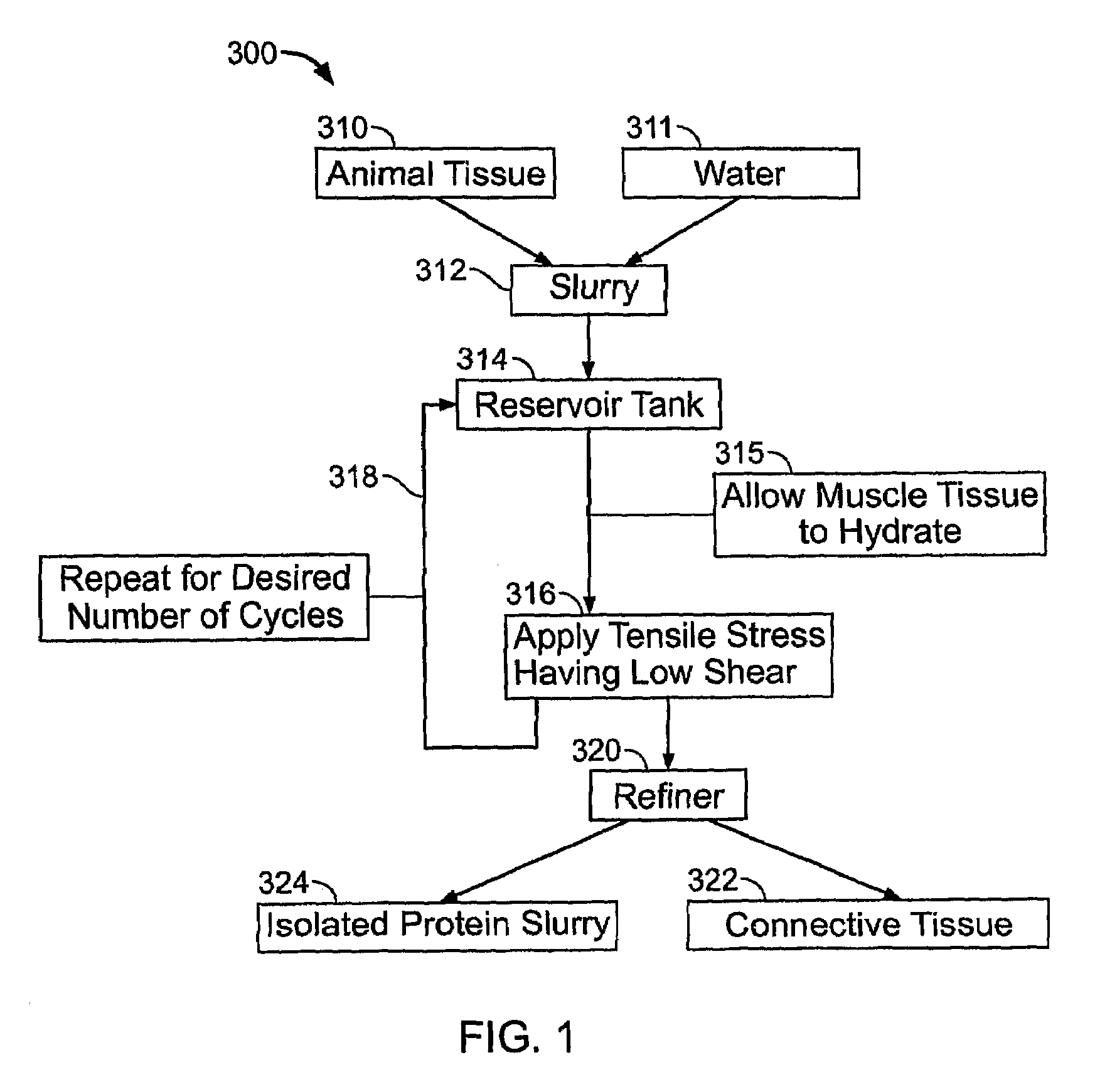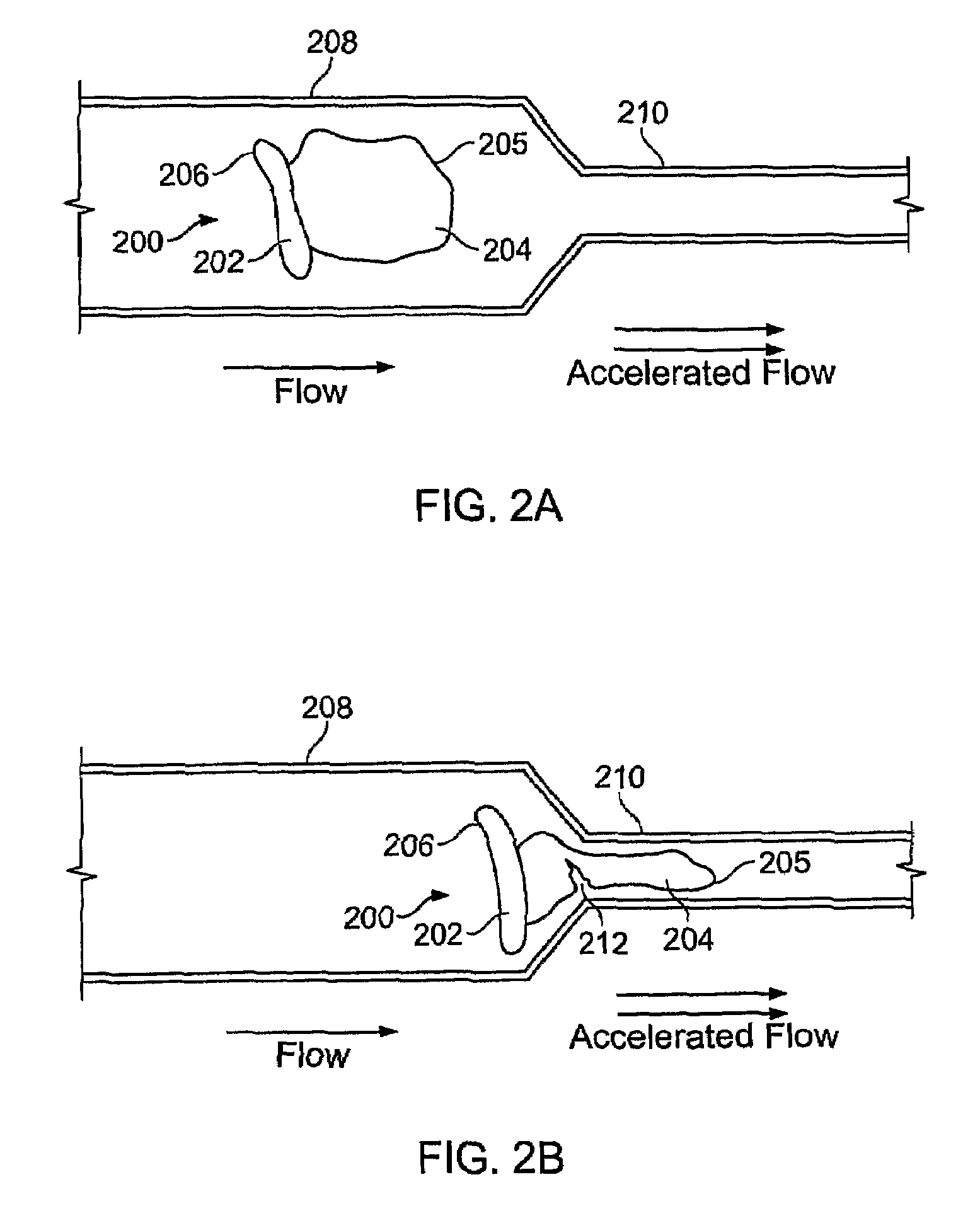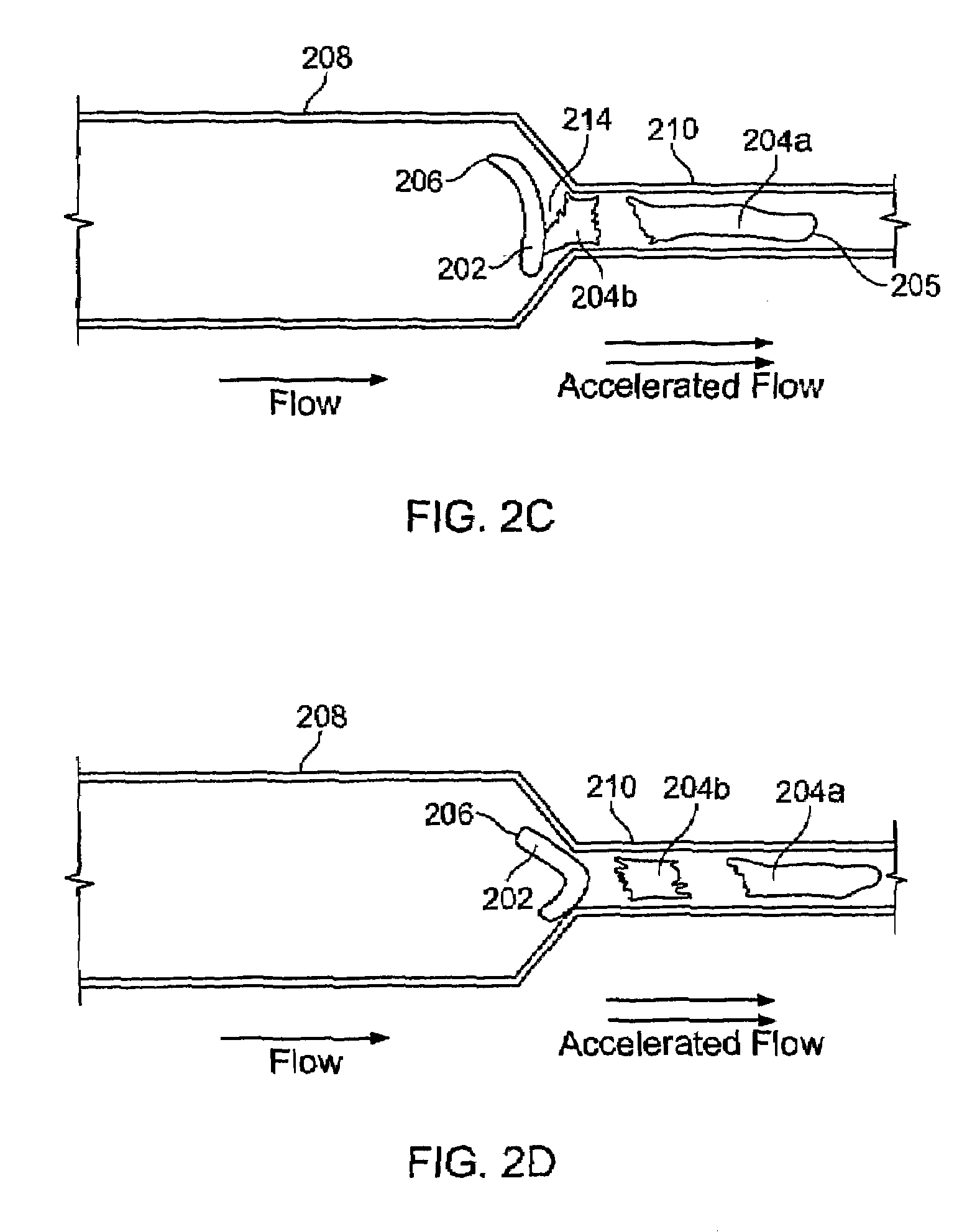Systems and methods for separating proteins from connective tissue
a technology of connective tissue and proteins, applied in the field of muscle protein processing, can solve the problems of affecting the use of these materials, dissolved proteins may have undesirable properties, etc., and achieve the effects of less foaming, shear and/or heat, and greater protein yield
- Summary
- Abstract
- Description
- Claims
- Application Information
AI Technical Summary
Benefits of technology
Problems solved by technology
Method used
Image
Examples
example 1
[0097]Gutted and headed fish were ground to a size of about ¼ inch and then mixed with water in a ratio of 1 part water to 1 part fish and placed in a reservoir tank. The fish tissue was allowed to sit in the water for 5 minutes, during which time the muscle tissue at least partially hydrated. The resulting slurry was pumped using a positive displacement pump through 3-inch ID pipe at a rate of 5 ft / sec. The pipe had a 3-inch long restriction fitting having an inner diameter of 1 inch. As the slurry was pumped through the pipe and reduction fitting, the slurry accelerated, applying force to the particles of fish tissue within the slurry and tearing the hydration-weakened muscle tissue from the connective tissue. Muscle tissue was also torn apart, reducing the particle size of the muscle particles, The pipe directed the slurry into a second reservoir tank, where the slurry incubated for an additional 5 minutes, allowing for additional hydration of the muscle tissue. The slurry was th...
example 2
[0099]A beef brisket was cut into 1-inch pieces and ground through a ¼-inch plate meat grinder. The resulting ground meat was then placed in water in a ratio of 1 part meat to 2 parts water to form a slurry. The slurry was agitated in a Cuisinarte food processor with a 3-inch diameter impellor having rounded edges (to reduce shear) at about 1750 RPM for five one-minute intervals, with two minutes hydration time between agitations. The slurry was then separated with a 1.5 mm swept screen, aided with an internal water spray. Connective tissue was caught on the screen, while separated muscle proteins that were suspended in the water passed through the screen holes.
example 3
[0100]Chinese white shrimp, deheaded and with the shell on, were chopped along with an equal amount of ice in a Stephan chopper for three minutes. The chopped shrimp were then agitated with an additional five parts water with a mixing hook (which includes several loops arranged into a whisk) having a 3-inch diameter, for 30 minutes at 120 RPM. The resulting slurry was then separated in a swept 1.5 mm screen aided with an internal water spray. Shells and connective tissue were caught in the screen, while suspended muscle tissue passed through the screen holes.
PUM
| Property | Measurement | Unit |
|---|---|---|
| temperature | aaaaa | aaaaa |
| temperature | aaaaa | aaaaa |
| velocity | aaaaa | aaaaa |
Abstract
Description
Claims
Application Information
 Login to View More
Login to View More - R&D
- Intellectual Property
- Life Sciences
- Materials
- Tech Scout
- Unparalleled Data Quality
- Higher Quality Content
- 60% Fewer Hallucinations
Browse by: Latest US Patents, China's latest patents, Technical Efficacy Thesaurus, Application Domain, Technology Topic, Popular Technical Reports.
© 2025 PatSnap. All rights reserved.Legal|Privacy policy|Modern Slavery Act Transparency Statement|Sitemap|About US| Contact US: help@patsnap.com



